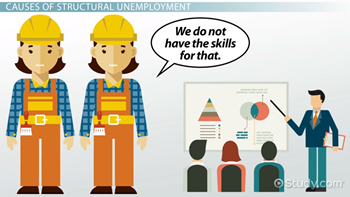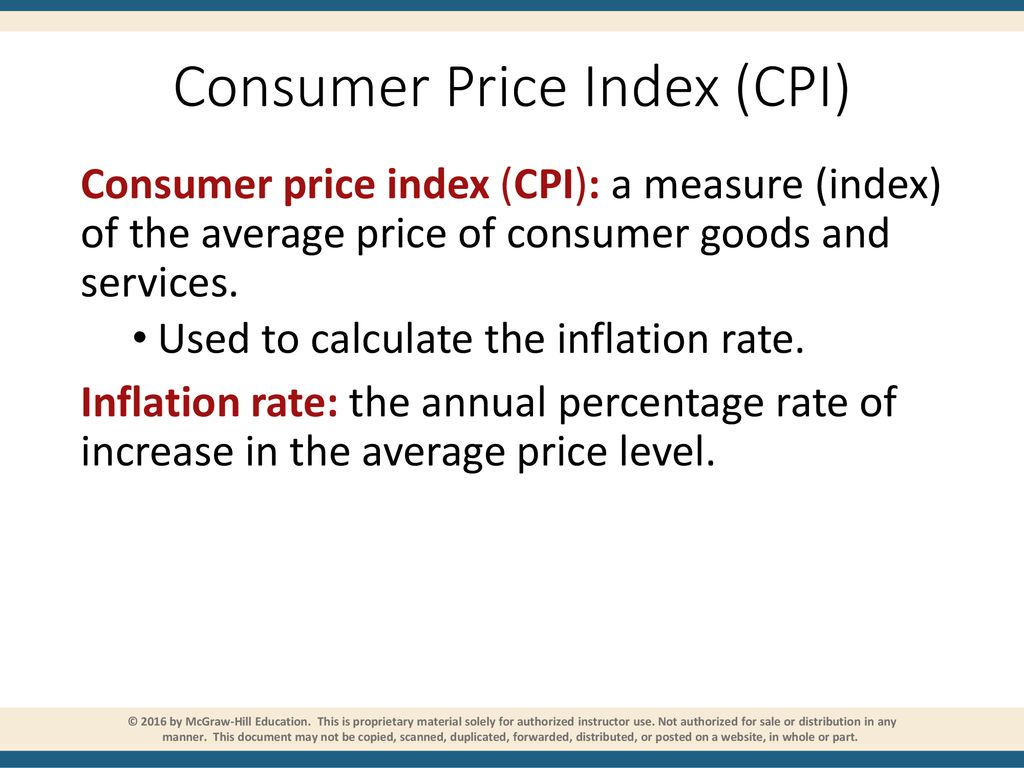
Structural Unemployment: When Skills Don’t Match Jobs – A Beginner’s Guide to Understanding and Overcoming the Challenge
Have you ever heard someone say, "There are jobs out there, but no one has the right skills"? Or perhaps you’ve been looking for work and noticed that the jobs available don’t quite match what you know how to do. This common and often frustrating situation is a classic example of structural unemployment.
It’s not just about a temporary slowdown in the economy or people taking their time to find a new job. Structural unemployment is a deeper issue, a fundamental mismatch between the skills workers possess and the skills employers desperately need. In today’s rapidly changing world, understanding this concept is crucial for job seekers, businesses, and even governments.
In this comprehensive guide, we’ll break down structural unemployment into easy-to-understand parts, exploring its causes, its impact, and most importantly, how individuals and society can adapt and thrive.
What Exactly is Structural Unemployment?
Imagine you have a fantastic set of tools for fixing old-fashioned typewriters. You’re an expert! But suddenly, everyone is using computers. While there’s still a need for people to work, your specific skills are no longer in demand. You are now structurally unemployed because your skills don’t match the new job requirements.
In simple terms, structural unemployment occurs when there’s a disconnect between the jobs available in an economy and the skills, qualifications, or locations of the workforce.
It’s different from other types of unemployment:
- Frictional Unemployment: This is short-term unemployment that happens when people are "in between" jobs (e.g., someone just graduated and is looking for their first job, or someone quit to find a better fit). It’s a natural and healthy part of a dynamic economy.
- Cyclical Unemployment: This occurs due to a downturn in the overall economy, like a recession. When businesses produce less, they need fewer workers, leading to widespread layoffs. As the economy recovers, these jobs often return.
Structural unemployment, however, is often a more persistent and challenging problem because it reflects fundamental shifts in how our economy works.
The Root Causes: Why Skills Don’t Match Jobs
So, what causes this frustrating mismatch? Several powerful forces are at play, reshaping the job market at an unprecedented pace.
1. Technological Advancements (Automation, AI, and Digitalization)
This is perhaps the biggest driver of structural unemployment today. New technologies are constantly emerging, making old skills obsolete and creating demand for entirely new ones.
- Automation: Robots and advanced machinery can now perform tasks that were once done by human hands. Think about manufacturing plants where assembly lines are now largely automated, or warehouses where robots pick and pack orders.
- Artificial Intelligence (AI): AI is revolutionizing industries from customer service (chatbots) to data analysis and even creative fields. Jobs involving repetitive data entry, basic calculations, or routine customer interactions are increasingly vulnerable.
- Digitalization: The shift to digital platforms means that skills in IT, cybersecurity, digital marketing, data science, and web development are in high demand, while traditional roles that relied on manual record-keeping or analog processes diminish.
Example: A skilled data entry clerk finds their job replaced by software that can automatically extract information from documents. They now need to learn data analysis or software proficiency to stay relevant.
2. Globalization and Outsourcing
The global economy means that companies can choose where to locate their operations based on costs, skills, and resources.
- Outsourcing: Many jobs, particularly in manufacturing, customer service, and IT support, have moved from higher-wage countries to lower-wage countries where labor costs are cheaper. This leaves workers in the original countries without their previous jobs.
- Global Competition: Companies face intense competition from around the world, forcing them to adopt more efficient (often automated) processes, which can reduce the need for human labor.
Example: A textile factory in the US closes down because it’s cheaper to produce the same goods in a country with lower labor costs, leaving many experienced factory workers unemployed.
3. Shifting Consumer Demands and Industry Decline
Consumer preferences change, and so do entire industries. What was popular or necessary yesterday might be irrelevant tomorrow.
- Decline of Traditional Industries: Industries like coal mining, print journalism, or landline telephone services have shrunk dramatically due to changing energy sources, digital media, and mobile technology.
- Rise of New Industries: Conversely, new industries like renewable energy, e-commerce, and personalized medicine are booming, but they require a completely different set of skills.
Example: The rise of streaming services like Netflix led to the decline of video rental stores like Blockbuster, leaving many retail workers needing to find jobs in different sectors.
4. Lack of Adequate Education and Training
Sometimes, the problem isn’t just that old skills are obsolete, but that the education system isn’t keeping pace with the new skills needed.
- Outdated Curricula: Educational institutions might not be teaching the most relevant skills for today’s and tomorrow’s job markets.
- Limited Access to Training: Not everyone has the opportunity or resources to access the necessary training programs to update their skills.
- Lack of Emphasis on Lifelong Learning: The idea that you learn once and then work for 40 years is outdated. Continuous learning is essential in the modern economy.
Example: A high school graduate struggles to find work because their education didn’t include basic coding or digital literacy, which are now prerequisites for many entry-level jobs.
Who Does Structural Unemployment Affect?
Structural unemployment casts a wide net, impacting individuals, businesses, and the entire economy.
1. Individuals
- Long-Term Unemployment: Workers affected by structural unemployment often face prolonged periods out of work, as their skills are simply not in demand.
- Reduced Earning Potential: Even if they find new jobs, they might have to take positions that pay less or require less skill, leading to a decline in their standard of living.
- Skill Obsolescence: The longer someone is out of work, the more their existing skills might degrade or become even more outdated.
- Psychological Impact: Long-term joblessness can lead to stress, anxiety, depression, and a loss of self-esteem.
2. Businesses
- Skill Shortages: Companies struggle to find qualified candidates for open positions, even if unemployment rates are high. This is often called the "skills gap."
- Reduced Productivity: Without the right talent, businesses might struggle to innovate, expand, or even maintain current levels of production.
- Increased Recruitment Costs: Companies may have to spend more on training new hires or on recruitment efforts to find scarce talent.
3. The Economy
- Slower Economic Growth: When a significant portion of the workforce is unemployed or underemployed, it reduces overall production and consumer spending, slowing down economic growth.
- Increased Inequality: Structural unemployment often disproportionately affects less-educated workers or those in declining industries, widening the gap between the rich and the poor.
- Social Unrest: High levels of long-term unemployment can lead to social frustration and instability.
Recognizing the Signs: Are You Facing Structural Unemployment?
It’s important to be honest with yourself about your career trajectory. Here are some signs that you might be facing structural unemployment or are at risk:
- You’ve been looking for a job for a long time, but with little success, despite applying to many positions.
- The jobs you are qualified for are becoming scarcer, or their pay is decreasing.
- Most job postings in your field require new skills (e.g., specific software, data analysis, digital marketing) that you don’t possess.
- Your industry or profession is widely discussed as being "in decline" or "at risk" due to automation or outsourcing.
- You feel that your current skills are becoming less relevant or useful in the modern workplace.
- You’ve been repeatedly rejected from jobs, and feedback often mentions a lack of specific, modern skills.
Bridging the Gap: Solutions for Individuals
While structural unemployment presents a challenge, it’s not a dead end. Individuals have significant power to adapt and thrive in a changing job market.
1. Embrace Lifelong Learning
The days of learning once and being set for life are over. Consider learning a continuous journey.
- Online Courses (MOOCs): Platforms like Coursera, edX, Udemy, and LinkedIn Learning offer courses on almost any topic, often from top universities and companies. Many are free or low-cost.
- Certifications: Industry-recognized certifications (e.g., in project management, cloud computing, digital marketing) can quickly validate new skills.
- Workshops and Bootcamps: Intensive, short-term programs can rapidly teach in-demand skills like coding, data science, or cybersecurity.
2. Upskill and Reskill
These are key strategies for staying relevant:
- Upskilling: Learning new skills within your current field to enhance your existing capabilities.
- Example: A marketing professional learning advanced analytics tools or social media advertising strategies.
- Reskilling: Learning entirely new skills to transition into a different role or industry.
- Example: A factory worker learning coding to become a software developer, or a retail manager training to become a cybersecurity analyst.
3. Network Strategically
Many jobs are found through connections.
- Attend Industry Events: Meet people working in the fields you’re interested in.
- Use LinkedIn: Connect with professionals, join industry groups, and follow companies you admire.
- Informational Interviews: Reach out to people in roles you aspire to and ask them about their work, skills needed, and career path.
4. Seek Career Counseling
Professional guidance can be invaluable.
- Career Counselors: Can help you assess your strengths, identify in-demand skills, and develop a personalized career plan.
- Government-Sponsored Programs: Many countries offer free or subsidized career counseling and training programs for the unemployed.
5. Be Adaptable and Open to Change
The ability to learn, unlearn, and relearn is perhaps the most important skill of all.
- Embrace New Technologies: Don’t fear them; learn to work with them.
- Consider Lateral Moves: Sometimes, a job that isn’t your "dream job" can be a stepping stone to acquire new skills and experience.
- Develop Soft Skills: Communication, problem-solving, critical thinking, creativity, and emotional intelligence are increasingly valuable and less likely to be automated.
Bridging the Gap: Solutions for Society and Government
Addressing structural unemployment requires a concerted effort from more than just individuals.
1. Invest in Workforce Development Programs
Governments and businesses need to collaborate on training initiatives.
- Subsidized Training: Programs that help individuals acquire new skills or certifications at little or no cost.
- Apprenticeships: Combining on-the-job training with classroom instruction, especially in new and emerging fields.
- Re-employment Services: Offering job search assistance, resume writing, and interview coaching for those affected by job displacement.
2. Reform Education Systems
Schools and universities must prepare students for the jobs of tomorrow.
- Focus on STEM (Science, Technology, Engineering, Math): Emphasizing these foundational subjects from an early age.
- Promote Digital Literacy: Ensuring all students have basic computer and internet skills.
- Integrate "Future Skills": Teaching critical thinking, problem-solving, collaboration, and creativity.
- Stronger Links with Industry: Ensuring that curricula align with the needs of local businesses.
3. Foster Industry-Academia Collaboration
Businesses know what skills they need. Educational institutions know how to teach. They should work together.
- Curriculum Development: Companies advising universities and colleges on what skills to teach.
- Internships and Co-op Programs: Providing students with real-world experience and employers with a pipeline of talent.
- Shared Resources: Businesses providing equipment or expertise to educational programs.
4. Encourage Entrepreneurship and Innovation
Creating new businesses and industries is key to generating new jobs.
- Support for Startups: Providing funding, mentorship, and resources for new businesses.
- Investment in Research and Development: Fostering innovation that can lead to entirely new sectors of the economy.
The Future of Work: Embracing Change
Structural unemployment is a sign of a dynamic, evolving economy. While it presents significant challenges, it also creates opportunities. The jobs of the future may not even exist yet, but the skills required to do them will likely involve:
- Digital Fluency: Comfort and proficiency with technology.
- Data Literacy: Understanding and interpreting data.
- Critical Thinking & Problem Solving: The ability to analyze complex situations and find solutions.
- Creativity & Innovation: Generating new ideas and approaches.
- Adaptability & Resilience: The capacity to learn continuously and bounce back from setbacks.
The key message is clear: continuous learning and adaptability are no longer optional; they are essential for navigating the modern job market.
Conclusion: Empowering Yourself in a Changing World
Structural unemployment, where skills don’t match jobs, is a complex issue driven by powerful global and technological forces. It can be disheartening for those affected and poses significant challenges for economies worldwide.
However, understanding its causes and proactive measures can empower individuals and societies to bridge the skills gap. By embracing lifelong learning, actively seeking to upskill and reskill, and fostering collaboration between education and industry, we can transform the challenge of structural unemployment into an opportunity for growth, innovation, and a more resilient workforce. Don’t be discouraged by change; prepare for it, embrace it, and leverage it to build a stronger, more adaptable future.




Post Comment